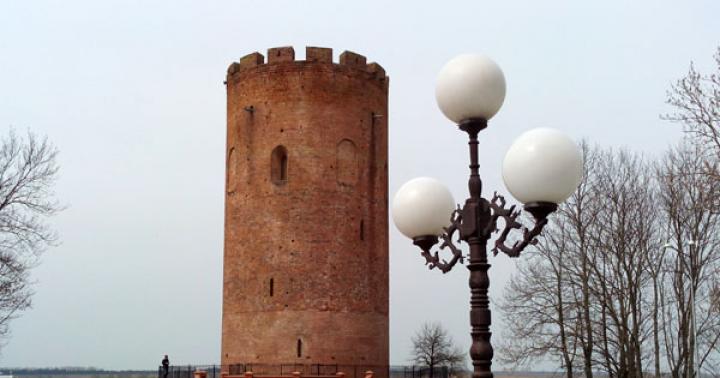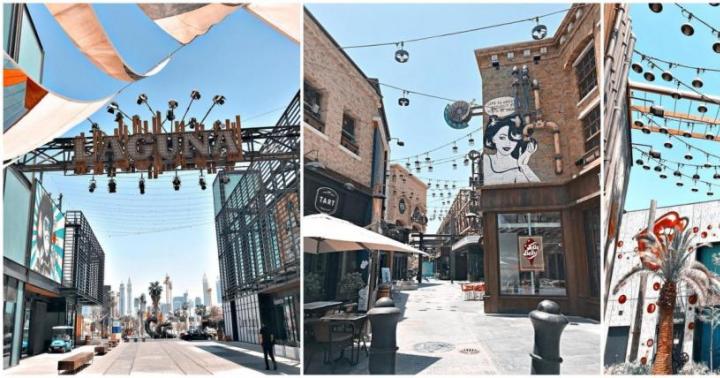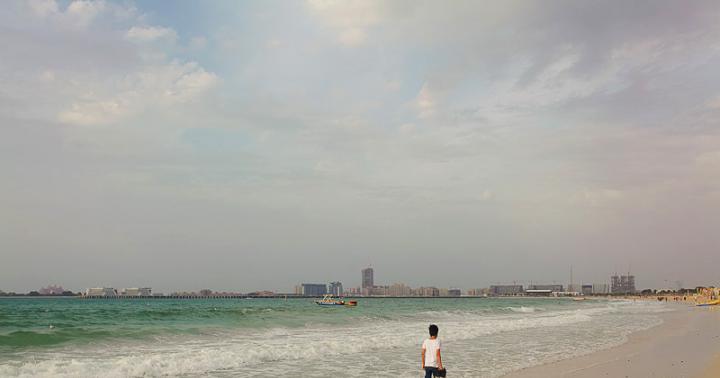In Karangasem district, Bali province. The name literally translates as “holy water from the Ganges.” Strictly speaking, it refers to the water palace built in 1946 by the King of Karangasem, although today it is used to refer to the area, which includes not only the palace, but also the surrounding picturesque rural areas.
The palace is surrounded by greenery, there are statues, pools, and fountains everywhere. King Karangasema, inspired by the beauty of these places, decided to build a palace and irrigation facilities to supply water to the rice fields. He received his architectural training in the Netherlands, so he was personally involved in the design and construction process.
The eruption of Mount Agung in 1963 severely damaged buildings, and ash and lava destroyed almost all vegetation. Much of what was built was destroyed, and vandals plundered valuables. In 1966, the king died without restoring the palace. Restoration work began in 1979, became large-scale in 1990 and continues to this day.
The Tirtaganga sculptural ensemble contains the foundations of the worldview in Hinduism: it lies on three levels, the lower one is the world of demons, the middle one is the world of people, the upper one is the world of gods. The middle world was symbolized by statues of people at the fountain in the central part of the complex, the lower world was symbolized by a labyrinth with sculptures of animals and spirits, and the highest single god was the fountain itself.
For a fee you can swim in the pool with holy water.
How to get to Tirtaganga Palace in Bali
Tirtaganga Water Palace near Amlapura is 8 km via Jl. Abang - Amlapura. From Besakih Temple - 30 km. WITH southern resorts Bali will have to travel at least 70 km: for such a trip it will be more convenient and profitable to rent a car.
Video: Taman Tirta Gangga
Pond in Tirtaganga on Google Maps panoramas
Each of the palaces you mentioned is unique in its own way, and it would be wrong to say that any of them are better or worse. If you do not like large crowds of tourists, then it is better to go to the Tirta Ganga temple, since not all travelers know about it and all the temple attractions can be seen without unnecessary crowds. The palace is located in Karangasem district, eight kilometers from ancient city Amlapura. Its name literally translates as “holy water from the Ganges,” but many tourists leave without really understanding what this river has to do with it.
The architectural ensemble of this palace is a real architectural labyrinth, consisting of bridges, fountains, pools, alleys, paths, various figures, statues of demons.
total area water gardens is 1.2 hectares. On the lower level there is a fish pool, a fountain, and several sculptures; on the middle level there are baths located in a holy spring, and on the upper level there is the Raja's residence with four guest bungalows and a number of domestic buildings. Some tourists are delighted with what they see and decide to stay overnight to fully enjoy all this beauty.
In fact, if you look closely at this complex, you can see that it is thought out to the smallest detail. Water from a natural source is collected in a large reservoir and then divided into two parts. The first part is used as drinking water for the neighboring city of Amlapura, while the second reaches the uppermost basin through an underground pipe. Excess water flows into a swimming pool located one level below, and from there into rice fields and small fish ponds. The lower level here is called the world of demons, the middle – the world of people, and the upper – the world of gods.
As a result of the eruption of Mount Agung, which occurred in 1963, the complex was slightly damaged, but over time it was completely restored and nothing reminds of that incident. The beautiful nature, surrounded by which the complex is located, deserves special attention (the most beautiful are rice terraces). Anyone can swim in the water for an additional fee. local baths and many tourists do not deny themselves such pleasure, especially since there are many legends around these baths. One of them says that one who bathes in the sacred waters of Tirta Ganga during the full moon will gain eternal youth and beauty. How true this legend is is unknown, but there are plenty of people who want to test it for themselves.
Also, if you are lucky, you can witness various religious rites and ceremonies in which water from the source is mandatory. You can visit this place daily from 6 a.m. to 6 p.m. admission ticket costs about three dollars (swimming in the sacred spring costs extra).
Hello friends! We are in Bali, which means we continue to talk about this wonderful island with its Balinese culture, fantastic natural scenery and incredibly kind people!
In previous articles, I already talked about the main thing, and about the ancient, the very first, which reminded me so much of Peterhof.
It was then that I promised that I would tell about another palace of the last rajah of the principality of Karangasem, well, the time has come :)
So in this article we will talk about the Tirta Gangga water palace, which is striking in its grace and splendor, with fountains, ponds, bridges and picturesque alleys with statues. At the end, I will give a recommendation on what you can combine a visit to this park with so that the trip turns out to be the most eventful experience.
Well, here we are in the palace!
Although, in appearance, Tirta Ganga looks historical monument, but the park and palace are not as ancient as they might seem at first glance. The complex was built less than 70 years ago in 1946, by the same king with the long name Anak Agung Anglurah Ketut, he also built his first palace, Taman Ujung.
It’s not that the first royal residence was not to their liking, it’s just that even kings have hobbies)) Balinese had a passion for construction and design, he even went to Holland to study architectural skills :)
And the fact that the Tirta Ganga Palace looks like an ancient relic is due to the special atmosphere and climate in Bali. Here, even ordinary stone houses, gates and statues are covered with soft green moss within a few months, which gives the impression that they belong to a great ancient heritage.
In 1963, as a result of the eruption of Mount Agung, the complex was slightly damaged, but to everyone’s joy it was completely and skillfully restored.
The name Tirta Ganga can be translated as follows: Tirta - holy or divine water, and. So, there is a belief that the water here comes from the sacred Indian river. By the way, we saw the Ganges in India, the water in it is, to put it mildly, dirty, especially in cremation sites, but here the water is clear, clean with carps. The holy spring gushes from under the roots of the sacred Banyan tree; this water is used in ceremonies and holiday rituals.
The territory of the Tirta Ganga complex (more than one hectare) is surrounded by greenery and built up with baths, pools and ponds 
Moreover, the entire water system is thought out to the smallest detail - one part is designed for neighboring villages and surrounding areas, the other for swimming pools and fish ponds, and the third goes to rice fields, of which there are a huge number in the area.
The demon Rakshasa in the form of a boar-fountain guards the sacred water in the pond,

up close it looks quite scary, like it’s spitting saliva

Tirta Ganga Palace consists of three complexes, with dozens of statues, bridges,

alleys,

and fountains you can walk among

The first complex on the lower level is just a system of lakes with numerous fountains

and pots of flowers

The second, on the middle level, has large swimming pools. And, the third, the top one, the residence house of the late Raja, here it is just a little visible

Each level has its own symbols: the top is the world of the gods, then in the middle is the world of people and the lowest is the world of demons.
The Tirta Ganga water palace is an amazing labyrinth of pools, fountains and bridges, in a beautiful green garden with many paths, one of the alleys is decorated not only with elegant statues, but also 
human height 
the most unusual path and not a path at all is a sequence of pebbles in a pond 
In which fattening golden carp swim, by the way, you can feed them, 
And some, it seems, even get caught 
perhaps this is the favorite pastime of the locals :) Not everyone can sit in the shade under a tree 
Although the view from there is definitely worth it. Along the circumference of the central fountain, symbolizing the highest god - statues of Hindu gods
Guys, and not only)) In general, all tourists have fun walking along the ponds, jumping from pebble to pebble 
It’s better to watch your step, otherwise you might accidentally step on a carp)) 
These guys offered to teach me how to catch carp with my hands)) 
Generally water complex We liked Tirta Ganga, here you can swim to your heart’s content in the springs and walk along the paths, 
admire the interesting finds of the architect 
You can even look into the demon's mouth 
And if this is not enough, then you can finally have a meal in a restaurant, and even stop here for the night. There are four Tirta Ganga bungalows in the complex Tirta Ayu Homestay & Restaurant, by the way, the hotel is run by the descendants of Raja Anak Agung Anglurah Ketut himself.
And here you can see hotels in the area.
There are numerous rice terraces around the Tirta Ganga complex; despite the fact that there are not enough rice fields, we did not miss the opportunity to take a walk here.
At the same time we walked around the palace, and along the path going up into the forest, we went up to look at the complex from high 
Helpful information:
- A ticket to the Tirta Ganga complex costs 15,000 rupees, parking for a bike costs 1,000 rupees.
- Swimming in a pool with holy water - also 15,000 rupees
- The complex is open until 6 pm.
Local grannies sell snacks at the entrance 
and so you won’t remain hungry))

Tirta Ganga Palace is located away from the main tourist sites; if you are coming from Bukit, it makes sense to leave early. And if you’ve already made it to these parts, it would be logical to go to others most interesting places nearby:
If you have enough time or decide to spend the night in a bungalow from the Rajah or at the nearest resort in Chandidas, then I recommend driving to the rice fields, of which there are a huge number here 
or, for example, visit the Lempuyang Temple (Pura Lempuyang), it is located about 10 km east of Tirta Ganga on the slopes of the Lempuyang mountain of the same name 
It is not very popular among tourists, although it plays an important role in Balinese culture and religion. The complex is huge and very beautiful, and how much mysterious legends connected with it, I won’t go into details today, this “Temple of Heaven” clearly deserves a separate article 
If you are going here, it is better to arrive at dawn, firstly, avoid fatigue in the sun, because to climb to the highest temple, you need to overcome 1700 steps through the jungle, and secondly, the views from above are simply breathtaking, but closer to lunch on the mountain fog - this mountain, just like the majestic Agung, holds the clouds, and clouds hang over the valley, visibility is noticeably worse .. 
Well, if you want to diversify your trip to the temples
Many people have heard about the Tirtagangga water palace in Bali. No doubt, it’s great there - especially when in the heat you’re having fun jumping on the pebbles sticking out of the water. But not everyone knows about another water palace in Bali - Taman Ujung. Let's compare two beautiful attractions in Bali and find out the advantages of one over the other. And be sure to look at the photos of these amazing places and decide which water palace to visit during your trip to Bali.
The correct answer is both!

This is such a beautiful view from the mountain on the territory of the Taman Ujung water palace. The beauty can be compared with the landscape around, only without the thieving monkeys.
And now - two advantages of the Tirtaganga water palace over Taman Ujung:
1. Tirtaganga Water Palace is easier to find
If you get to Taman Ujung on your own, on a rented motorcycle, you will have to get lost - especially if your hotel in Bali is in Ubud or Kuta. Considering that our hotel in Bali was located in glorious city Ubud, the road took us No, it happened on the way to another attraction, but the road to water temple Taman Ujung was also not easy))) Therefore, carefully study the map of Bali before going there (Tirtaganga Water Palace and Taman Ujung on the map of Bali - at the end of the article)
2. Fountains!
There are none in Taman Ujung. There is one in Tirtaganga. And that's it)

The Tirtaganga Water Palace is famous for its fountains and monster statues. Although )))
Tirtaganga Water Palace and Taman Ujung: Brief Introduction
The Tirtagangga Water Palace in Bali was built in the 40s of the last century. The name of this place translates as “Water from the Ganges,” a sacred river for Hindus, and its area is 1 hectare. The Tirtaganga Water Palace is a kind of labyrinth with monuments, fountains and, of course, ponds. The highlight of this place is a “path” laid along one of the lakes made of stones with a polished top, rising 2-3 cm above the water level. You jump on them, colorful fish swim around - beauty! A ticket to the Tirtaganga Water Palace costs 10,000 rupees.

The Tirtaganga Water Palace is named after the Indian River Ganges. Luckily, that's where their similarities end.
The Taman Ujung Water Palace is located on the seashore in the eastern part of the island, near Tirtaganga. Built in Balinese and European styles, the area is about 10 hectares. Construction here began at the beginning of the last century, but in the 60s and 70s, the Taman Ujung Water Palace was badly damaged due to natural disasters, but was restored and became even more beautiful. A ticket to the Taman Ujung Water Palace costs 20,000 rupees.
Today we will show you two water palaces in Bali - Tirta Gangga and Taman Ujung. Although in our understanding, these are more likely parks with ponds, but that’s what it sounds like! Water Palace!
💧💧💧Water plays an important role in many cultures, and in Hinduism a special role is played by the sacred river Ganga - the heavenly river that descended to earth and became the Ganges River. The name of the first palace we went to sounds like “Tirtaganga” and translates as “waters of the Ganges”
Tirtaganga
Entrance fee = 30,000 rupees
Opening hours: 7.00 – 18.00
Video filming, drone filming = 500,000 rupees
So, what do we see when entering Tirtaganga?
A very small area, several ponds with fish, one fountain, picturesque tiny bridges and evenly trimmed bushes. Everything is blooming and pleasing to the eye. The park looks a little European with its smooth lawns. Although there are statues of mythological characters and palm trees, it does not feel like you are in Asia. This assessment has both a plus and a minus, because despite the modest size and all the charm of this place, I personally did not see any authenticity.
Tirtaganga was built in 1946 by the last ruler of the Karangasem kingdom.
🐠 The main joy for tourists here comes from feeding numerous eternally hungry goldfish, and there are so many of them here! They pounce on the food, jumping out of the water with their mouths open greedily. It’s understandable, the individuals are so large, you wonder how old they are? Or the tourists just fed them up =) I read that they bought carp specially from Japan, and they can reach a meter in length and live quite a long time.


